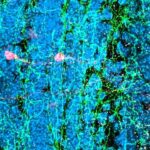Link to Pubmed [PMID] – 32739421
Link to HAL – sorbonne-universite-03163085
Link to DOI – 10.1016/j.neubiorev.2020.07.037
Neurosci Biobehav Rev 2020 Nov; 118(): 358-366
Because of our classification system limitations for defining psychiatric disorders and understanding their physiopathology, a new research area based on dimensions has emerged. It consists of exploring domains derived from fundamental behavioral components linked to neurobiological systems. Emotional processing is among the most affected dimensions in bipolar disorders (BD), but is excluded from the definition criteria. The purpose of this review is to synthesize the emotional responses disruption during the different phases of BD, using intensity and valence as the two key characteristics of emotions. We integrate those emotional disruptions into an original, emotion-based model contrasting with the current diagnostic frame built on mood. Emotional processing is underpinned by cortico-limbic circuits involving the amygdala. Recent publications showed the crucial role of the amygdala in emotional processes triggered by stimuli of negative, but also positive valence. We show how these neuroscience data can provide physiological basis for emotional disturbances observed in BD. We conclude with translational perspectives to improve the current knowledge about neural substrates underlying altered emotional responses characterizing BD.


